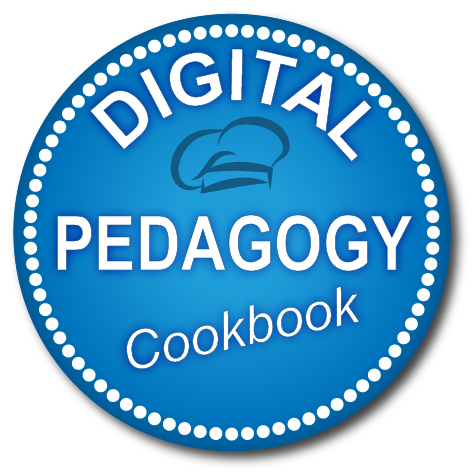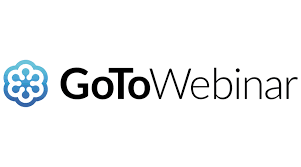DigCompEdu Competence area
Progression Level
Minimum digital skills level of Students
Minimum digital skills level of Educators
Learning/Teaching situation
Using digital resources to deliver a course.
Target group
Teachers, trainers, students
Ingredients
- PC/laptop/tablet
- Internet
- GoToWebinar account
- Working Camera
- Working Microphone
Description
GoToWebinar is a platform for businesses and sole proprietors with which they can create and deliver online and video conferences with their customers, colleagues, stockholders, and so on. Even though it has been designed to serve the purposes of the business world, it is a valuable tool for teachers and trainers to address their learners.
Having online seminars (webinars, a.k.a virtual classroom sessions) allows for an audience located anywhere to present to an audience locate anywhere, thus it is a perfect tool for distance students, or for teachers/trainers who are not in the location of the class. Furthermore, using webinars to deliver a course makes it more appealing, innovative and relevant to the contemporary digital environment, thus more enticing for potential attendees.
The following lines will give you some tips and ideas how GoToWebinar can be useful and applied in a learning context.
How to do it (step by step)
Step 1
Know your audience!
That sounds more like a cliché, rather than a proper advice, however adapting:
• the exact contents to be delivered
• the format – e.g. a frontal lecture-type session, discussions, input and presentations from the learners, have a guest-speaker etc.
• level of difficulty;
are all essentials to engaging the learners and achieve a wider and stronger impact. Hence, when structuring the webinar it is to be born in mind what is the profile of the learners (level of education, age, interests, reason for them to attend the webinar, etc.) and what exactly the trainer/teacher aims to achieve (provide input to the learners, to ask for input from the learners, to engage the learners in a discussion, etc.).
Webinars are a great tool to deliver trainings when trainer and trainees are not in the same location geographically, however it is to be born in mind that attendees need to have access to the Internet and some mobile device to be able to attend.
If you do not know your attendees, the platform allows for the presenter to gather some information for the webinar participants, which may be helpful for statistics, research or just to develop your further sessions.
Step 2
Organizing the webinar
Having already elaborated on the topics, contents and your target group, it`s time to invite your participants. Working with the platform is quite intuitive, you schedule your webinar and invite the participants. You can either send it to participants you already know, or you can put the link for the upcoming webinar on your faculty/school website, social media, or any networking tool you are using for your trainings. You can monitor how many people and when they register to be updated for the progress of your organization process.
While preparing, it is also useful to think in advance about the after-webinar time and communication rather than only focusing on the session itself. It may happen that the session may take longer than expected, you can finish earlier, or go with the flow and forget to present some information, etc. Thus, it is important to be able to have a channel for follow-up communication with the attendees to send them additional materials, distribute further tasks, or appoint another webinar session.
Also, depending on your objectives, you may consider having the video recorded beforehand, or having a live session. If your purpose is to engage your audience in a discussion and get their inputs then you most certainly would need to organize a live session. If you want to provide input and information to your audience without expecting interaction on their behalf you may consider recording a video and uploading it. It may be optimal also to have a video of your input first and ask your participants to watch it and organize a live webinar to reflect and discuss the input you have already provided through the video.
Step 3
Check your contents PRIOR to the session
Make sure first that you practice what you plan to do during the session, so that you know how the flow would go, and it would also be quite useful if you record it and watch it in order to make any further adjustments if needed!
Furthermore, ensure that you are also aware what will be visible on your attendees` screen and how the session would look like from their perspective. If you want them to access external sources, websites, etc., prior to the session check if these will be available to them as they are for the trainer to avoid them not seeing your input just because they cannot access a certain source.
If possible, you can also ask for someone outside the framework of the webinar`s topic to watch the contents and are able to provide you with HONEST and CRITICAL feedback. If they are engaged and interested so will be your audience.
If this is your first webinar, it may be useful for you to watch other webinars and decide what NOT to do and what you want your webinar to look like. It will help you understand what it is to actually be a student in a webinar and check what will make for impactful and meaningful contents for you as a student and design it for your trainees as well.
Step 4
The webinar
As already mentioned, the session may not go exactly as planned (technology issues, time limits, etc.) so have a Plan B for possible setbacks. For example, you can have some extra activities for the attendees to do, while you prepare your contents, or if you experience technological issues. Moreover, group activities and team-work are always beneficial for the learning process, especially f participants are not physically together.
Bear in mind that, the virtual classroom is quite different than having an audience physically present in front of you. Sometimes you may not even see your attendees or hear them, but still there are present and you need to engage them. Furthermore, you need to be aware of the technology you are using and all the steps (and clicks) you need to do. It may be useful if you are inexperienced in delivering webinars to write down all the steps that you need to do to perform an activity as this may facilitate the process of speaking and still coordinating your equipment at the same time.
Step 5
Engage your Audience
If you want to encourage participation and interaction aim to involve the attendees during the session:
- Ask questions
- Make the live chat available
- Have the recap
- Leave space and time for questions and comments
- Ask for participants` input
- Have them participate in group activities
- Use proper materials: visuals, handouts, quizzes, polls, videos, images, etc.
Step 6
Follow-Up
Make sure that you keep engaging with your audience after the webinar as well. It is a part of the learning process, rather than just one-off event. You can relate it to other tasks and activities, refer to it as a learning material for future work, provide further input and elaboration via emails, schedule a next session, etc.
ASK FOR FEEDBACK! This is one of THE most essential elements for having a successful webinar. Ask your participants to critically engage and evaluate and comment on the session. Having analytical and insightful feedback is a clear indicator that your audience was present and PAYING ATTENTION to what you were saying. Furthermore, the feedback will be a valuable source and input for your following sessions.
Sources:
- GotoWebinar UserGuide, available at: https://www.rsc.org/images/GoToWebinar%20User%20Guide_tcm18-251860.pdf
- eLearning Tips Online Classroom and Webinar Success, available at: http://www.modern.pm/gotowebinar-io3/?the-video=6
- 5 ways GoToWebinar can Help You Host Better Online Training, available at: https://blog.gotomeeting.com/5-ways-gotowebinar-can-help-you-host-better-online-training/
There is more…
Using GotoWebinar allows for:
- High-definition video
- Unlimited attendees
- Screen sharing
- Multiple meeting facilitators
- Share keyboard and mouse control
- Recording of the meeting
- Drawing tools
- Meeting is accessible from most popular platforms and mobile devices
- Can use Outlook, Google Calendar, etc. for better management and planning during the webinar
It is a user-friendly tool with an array of tips, support and advices available on the GotoWebinar facilitating webinar-developing process. This tool is useful to reach out to a wider audience of learners, not only the ones who are able to physically be present in your class. It allows for flexibility, interactivity, diversity in the used tools, and connectivity for both trainer and learner.
Source:
- GotoWebinar, http://www.modern.pm/gotowebinar-io3/
See Also
- GoToWebinar, available at: https://www.youtube.com/user/gotowebinar
- Tips on how to develop and structure your webinar you can find the GotoWebinar blog, available at: https://blog.gotomeeting.com/gotowebinar/webinar-tips/ and https://www.gotomeeting.com/webinar/resources
- Online Teacher How to: Run a Stress Free Webinar, available at: http://www.modern.pm/gotowebinar-io3/?the-video=7

